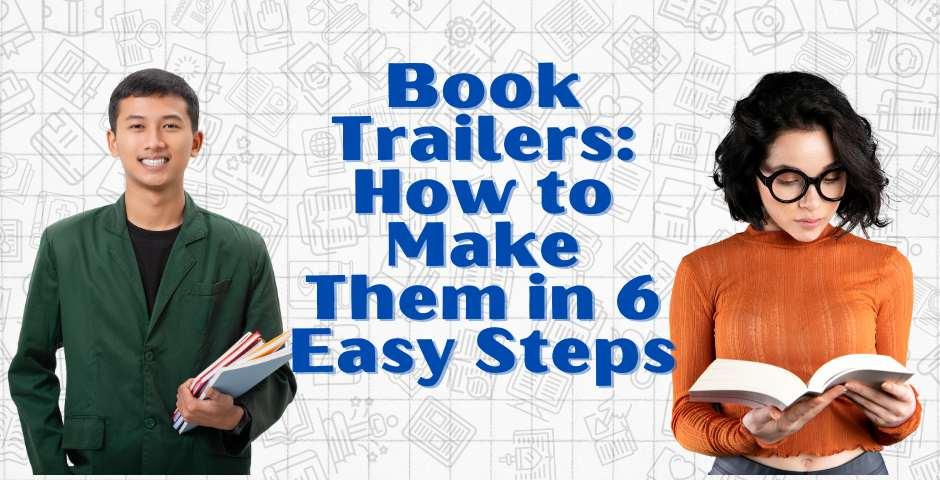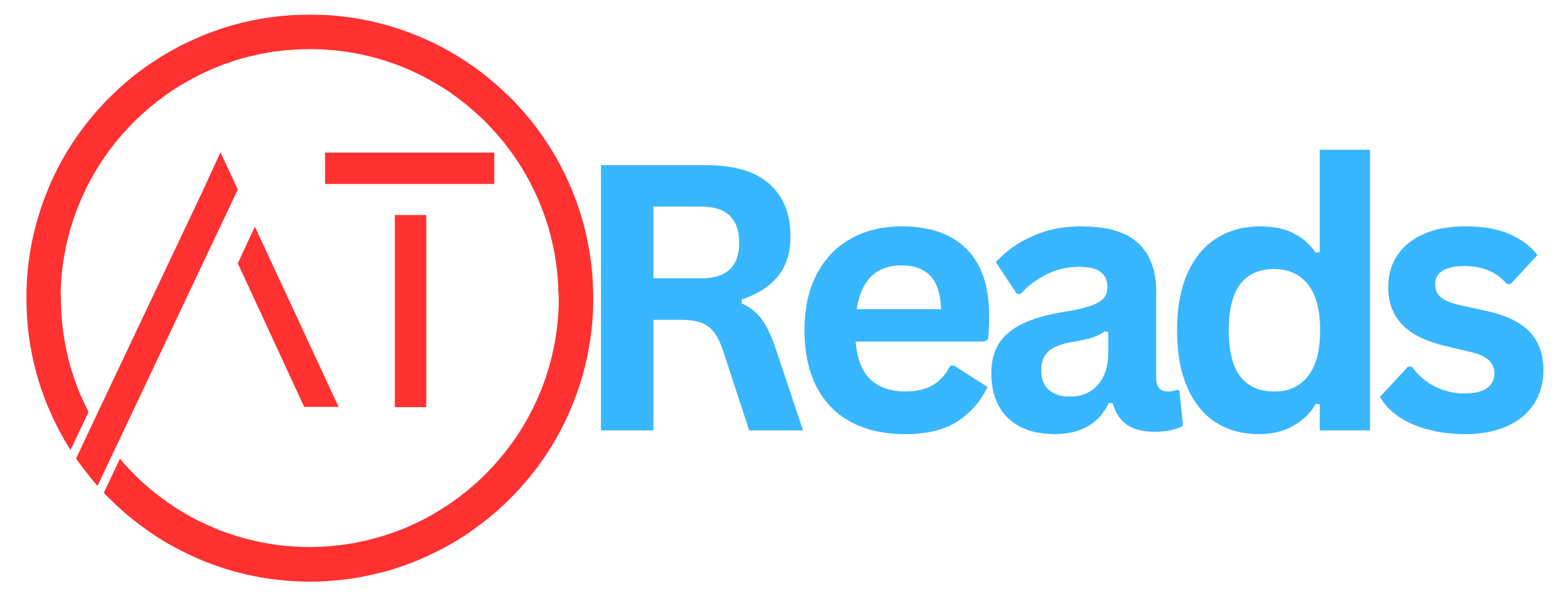Book Trailers: How to Make Them in 6 Easy Steps

One of the most effective and engaging tools authors can use to promote their books is a book trailer.
Just like movie trailers entice audiences to watch films, a well-crafted book trailer can grab the attention of potential readers, giving them a visual and emotional taste of what your book has to offer.
Book trailers offer a dynamic way to introduce your work in a short, captivating format that can be shared easily across social media, websites, and other platforms.
They combine the power of visual storytelling with sound, music, and text to create a lasting impression, building excitement around your book and driving interest.
A compelling book trailer can help readers connect with your story even before they flip the first page.
Whether it’s highlighting the suspenseful moments of a thriller or setting the romantic tone of a love story, the trailer serves as a preview, drawing potential readers into the world you’ve created.
Step 1: Define Your Vision and Message
The first step in creating a compelling book trailer is defining the core theme, mood, and target audience of your book.
Think about the central message you want to convey to viewers. Is your book a heart-pounding thriller, an emotional drama, or a lighthearted romance?
The genre will set the tone for your trailer, influencing everything from the visuals to the music.
- Core Theme: Understand the essence of your book. Is it about love, loss, mystery, or adventure? Having a clear theme will help you stay focused on what aspects of the story to highlight in the trailer.
- Mood: Whether it’s tense, uplifting, mysterious, or whimsical, the mood of the trailer should match the emotions readers will experience while reading the book.
- Audience: Who are you trying to reach with this trailer? Young adults, mystery enthusiasts, fantasy lovers, or romance readers? Tailoring your trailer to the interests and expectations of your target audience will ensure that it resonates with the right people.
In this step, it’s crucial to clarify the emotions you want to evoke. Do you want your viewers to feel excited, intrigued, or moved?
The emotional tone of your trailer should reflect what readers will experience throughout the book, creating a strong connection from the very beginning.
Step 2: Write a Short Script
A successful book trailer needs a concise, engaging script. The key to a good script is to hook viewers immediately and make them want to learn more about your book.
You have a limited amount of time—usually between 30 seconds and 2 minutes—to convey the most compelling elements of your story.
- Introduction: Start by introducing the title of your book, your name as the author, and a catchy tagline or hook. The tagline should grab attention and make viewers curious to know more.
- Plot Highlights: Briefly mention the central conflict or the most intriguing elements of the plot. This should spark curiosity without giving too much away. Tease just enough to make viewers eager to read more.
- Call-to-Action: End your trailer with a call-to-action (CTA), directing viewers to where they can purchase your book or learn more about it. This could include a link to your website, an online store, or a pre-order page.
Keep the script tight and impactful—remember, you want to create a sense of urgency and excitement without overwhelming the viewer with too much information.
Step 3: Gather Your Visuals and Assets
Visuals are key to setting the tone and bringing your book’s world to life. The images you choose should align with the theme, mood, and genre of your book. Consider the atmosphere you want to create and how visuals can support it.
- Book Cover: Your book cover should be front and center in the trailer. It’s your brand’s visual identity and should be presented clearly to create recognition.
- Images and Stock Footage: Use images that represent key aspects of the book, such as characters, settings, or significant symbols. If you don’t have original footage, stock images or videos are an excellent alternative. There are plenty of free or affordable options available online that can align with your book’s themes.
- Visual Consistency: Make sure the visuals enhance the book’s atmosphere and align with the emotions you want to evoke. For instance, if you’re making a horror book trailer, dark, moody visuals will work well. For a romance, bright, warm visuals may be more appropriate.
Keep the visuals focused on the key elements of your book’s story to create a clear and cohesive narrative in the trailer.
Step 4: Add Sound and Music
Sound and music are powerful tools for enhancing the emotional impact of your trailer. The right soundtrack can make or break the mood of your trailer, so choose wisely.
- Music: Select music that complements the tone and genre of your book. A thriller might benefit from a suspenseful, fast-paced track, while a romance could use something softer and more emotional. Be sure the music heightens the mood and doesn't overpower the visuals or narration.
- Sound Effects: Subtle sound effects, such as footsteps, a clock ticking, or a soft breeze, can create an immersive atmosphere. They help set the scene without distracting from the main message.
- Narration: Consider adding a voice-over to narrate key parts of the script. A professional voice actor can lend authority and polish to your trailer. Alternatively, if you choose to narrate yourself, make sure your voice conveys the right emotions for the content.
Sound and music should work together to create an emotional connection with the viewer, helping them feel the atmosphere of the story before they even read a page.
Step 5: Edit Your Trailer
Editing is where the magic happens, as it brings all the pieces of your trailer together into a cohesive, polished final product. This is where you ensure that the visuals, sound, and script work seamlessly.
- Use Editing Software: Choose an editing program that suits your skill level. For beginners, iMovie or Adobe Premiere Rush are great choices. If you’re more advanced, Adobe Premiere Pro offers more professional editing options.
- Syncing Visuals and Music: Ensure that the pacing of the visuals matches the music. A slow, dramatic scene may need a slower track, while a fast-paced scene might require more energetic music.
- Text and Titles: Add text overlays to display the book’s title, author name, and key quotes. Keep the text brief and legible. The timing and placement of text are critical—don’t let it distract from the visuals but make sure it enhances the trailer.
- Maintain Flow: Your trailer should flow naturally from start to finish. Each scene should transition smoothly, maintaining viewer engagement from the first second to the last.
Remember to keep your trailer engaging and dynamic without overcrowding it with too many effects or transitions.
Step 6: Share Your Trailer
Once your book trailer is ready, it’s time to share it with the world. Here are some key platforms and strategies for distribution:
- Social Media: Share your trailer on platforms like ATReads, Facebook, Instagram, Twitter, and TikTok. These platforms are perfect for creating buzz and reaching a wide audience. Post teasers, behind-the-scenes content, and countdowns leading up to the trailer launch to build anticipation.
- Your Website: Embed the trailer on your author website to give visitors an immediate visual introduction to your book.
- Book Promotion Sites and Newsletters: Reach out to book promotion websites and include your trailer in your email newsletters. It’s a great way to connect directly with your readers and potential fans.
- YouTube and Vimeo: These platforms are ideal for hosting videos that can be easily shared across different websites and social media platforms.
Remember, a well-made book trailer isn't just an advertisement; it’s a powerful marketing tool that can build excitement and curiosity around your book.
Whether you’re a seasoned author or just starting, leveraging your trailer across social media, websites, and other platforms will give your book the visibility it deserves.
Don’t forget to connect with writer communities, like ATReads, for support, feedback, and inspiration. These groups can provide valuable insights, resources, and encouragement as you continue to market your book and grow your readership. The journey doesn’t end with the trailer—use it to build a strong, engaged community of readers eager for your next release.

- Book Reviews & Literary Discussions
- Writing
- Reading List
- Arts and Entertainment
- Personal Development
- Storytelling
- Startup
- Books
- Biography
- Dance
- Drinks
- Entertainment & Pop Culture
- Health & Fitness
- Education & Learning
- Food & Cooking
- Games
- Gardening
- Self-Care & Mental Health
- Home Decor & DIY
- Literature
- Music
- Networking
- Other
- Party
- Philosophy and Religion
- Place
- Shopping
- Relationships & Dating
- Sports
- Theater
- lifestyles & hobbies/shutterbugs
- Lifelong Learning
- Tutorial
- Announcement
- Inspirational Stories & Motivation


